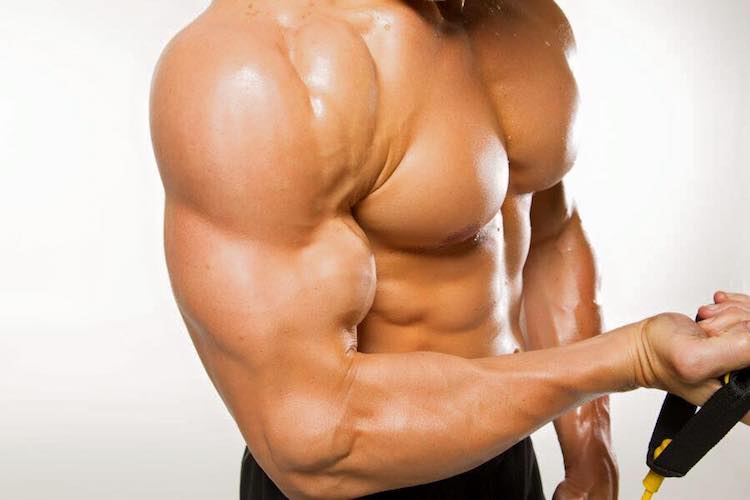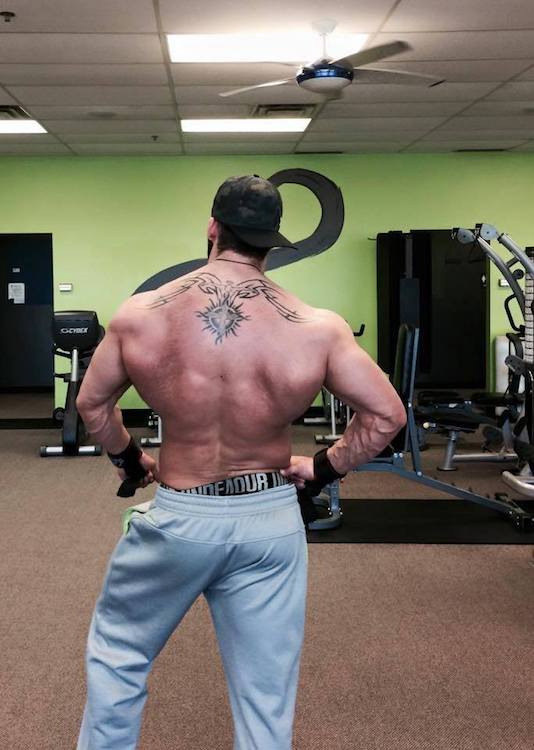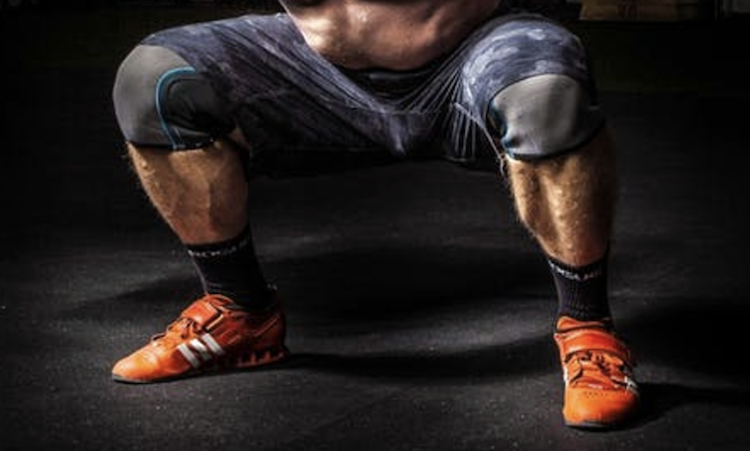Training Around Aches and Pains
If you stay in the iron game for long, you’re eventually going to get hurt – it’s unavoidable! Even if you’ve stayed healthy for years, one bad rep or even a slip or fall outside the gym can leave you with a nagging injury. Plus, every rep, every set and every workout produces a certain amount of wear and tear on your body. If you’re a hard-training athlete, you’re past the point where you need to worry about “exercising” for health. You need to make sure your training doesn’t interfere with your health!
Fortunately, there are more than enough ways to train around nagging aches and pains before they become serious injuries that keep you out of the gym. To do so, you’ll need a little know-how, a little patience and the willingness to try some different things. Pushing through the pain may work for a little while, but it WILL come back to haunt you! Try these fixes instead.
Shoulders

The shoulder is the most mobile joint, and that mobility makes it the most vulnerable. Just like gadgets with lots of moving parts, your shoulder has all sorts of intricate muscles, ligaments and tendons that can fall apart if they’re used incorrectly.
Unless you’re a powerlifter or strongman who HAS to do certain exercises for competition, the best thing you can do for your shoulder health is to avoid the movements that hurt it the most. For some guys this is the basic bench press (though it’s not as dangerous a move as some would have you think). For others, it’s dips, incline pressing or overhead pressing. There are plenty of pressing movements you can use to build your chest, delts and triceps, so don’t force a painful exercise.
Aside from exercise selection, upper back placement will be a lifesaver for your shoulders. No matter what type of pressing movement you’re doing – flat, incline, whatever – you need to have your scapula retracted throughout the entire range of motion. Doing so will keep your rotator cuff muscles safer, and your chest will be in a position to do more of the work.
Lower Back

Lower back health is worthy of an article all its own, and since I’m not a doctor, I can’t recommend anything for a slipped disc, herniation or any other serious condition. However, I can tell you what’s saved my lower back and the backs of plenty of my clients – glute work! Your glutes and lower back tend to fire at about the same time during squats and deadlifts, and if one is weak, the other has to compensate. If you’re rounding on your squats and deads, take the weight down, arch your lower back, and teach yourself to fire your glutes first and foremost. Your strength will progress much more quickly and consistently in the long run, and you won’t have to deal with a painfully sore lower back nearly as often.
Knees

Knee health is a big issue for longtime athletes and taller lifters. I’ve read all sorts of articles that claim that your knees “should” be just fine no matter how heavy or how often you squat, as long as you’re using a certain form. I call BS. We evolved to survive, not to build comically huge legs and a massive squat, and if you do the work necessary to get the wheels you want, your knees are going to be at risk.
Still, you do want those wheels! To protect your knees for the long haul, train in phases so that you’re not always squatting stupidly heavy. Don’t bother maxing out or hitting super-heavy doubles or triples, either. Unless you’re a powerlifter in the last stages of prep for a meet, there’s simply no reason to go that heavy. Sets of about five reps are great for getting stronger, and sets of TEN or more are tops for building size.
In fact, the quads respond better than almost any other body part to moderate weight and high reps. Of course, you have to get progressively stronger to increase that “moderate” weight. But throughout much of the year, you can make insane progress on your legs by training with 60-70 percent of your squat max for lots of perfect, controlled sets and reps.
Hips

Lower back, knees and hips – One of these will eventually hurt! If you’ve got a long torso, your lower back is more likely to be a problem area. But if you’re long-legged, squatting will put more wear and tear on your hips (and knees) due to your long range of motion.
The hip joint is similar in structure to the shoulder, and as with pressing movements, one of the best things you can do for hip health is to find the squatting variations that you can perform with minimal joint discomfort. For most lifters, this means using a moderate or close stance. A high bar position will also keep your joints in better shape, and even though you’ll have to use less weight than if you went low-bar, the extra range of motion will provide just as great a stimulus for your quads and glutes. Unless you’re competing in powerlifting and need the biggest squat possible, this will probably be your best bet for consistent, pain-free progress.
Elbows

Elbow problems aren’t as common as hip, knee and lower back issues in my experience, but they’re still pretty common among guys who are really strong on the bench and other pressing movements. If yours are bothering you, however, I would first look to things OTHER than those pressing movements as the potential cause.
Are you doing super-heavy skull crushers? If so, stop! Arm training should NOT be as heavy as squatting, pulling and pressing, since your relatively small elbows have to take almost all of the load. Keep your skull crushers and other extensions light, in the 15-20 rep range, and use dips and close-grip presses for the heavy work.
Also, believe it or not, the way you squat could be what’s killing your elbows when you bench. Ideally, you’ll be driving your elbows forward when you squat to promote the correct torso position. But if your hands are close together, AND you’re shooting your elbows forward, all of those surrounding muscles and tendons are being stretched to the max! The solution? Widen your squat grip.
Playing it Safe

Ultimately, all of these fixes won’t do a thing to prevent injury if you still try to power through workouts while you’re hurt. It may make sense once in a while, especially if you have a competition coming up (or if you’re about to take a week or two off). But for the most part, you need to approach each training session with a long-term mindset. If your shoulders are killing you today, you could rest, recover and come back strong next week – or you could go HAM on bench and put yourself out for the next few months. Which one sounds better to you?











